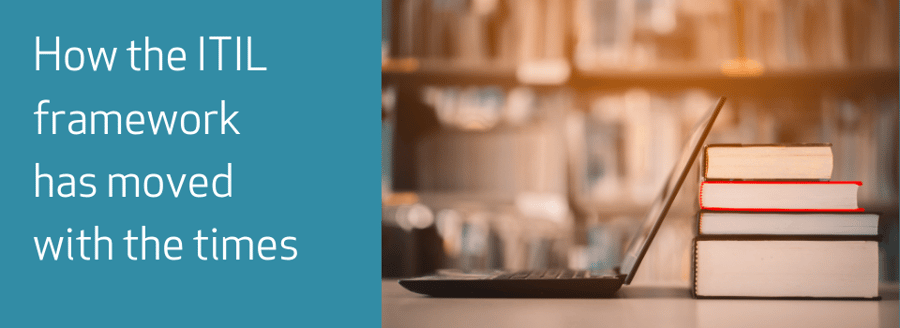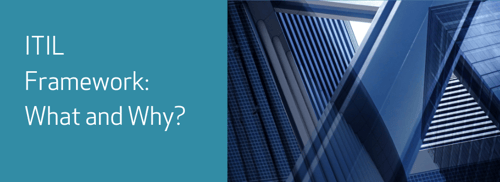When ITIL first emerged, it was very much a framework – a guiding hand – for building a service desk solution around.
ITIL framework evolution
Yet even in its V1 iteration from the 1980s – defining the basic processes of service support and delivery – it hit upon a number of basic building blocks, that are still as relevant today, notably: helpdesk, change management, software distribution, capacity management, contingency planning, availability and cost management. Moreover, within the space of a few years, many businesses had taken these guidelines to heart, treating them as the gospel according to ITIL where helpdesk was concerned. It spawned independent compliance bodies and an entire sub-industry feeding off the ITIL culture. This, in turn, put pressure on the ITSM software vendors to comply with ITIL recommendations in order to make the shortlists for potential purchases by would-be customers; not being ITIL-compliant might make the different between being evaluated or ignored.
Ever since those early days – and the evolution of ITIL – software vendors have trod the fine line between adherence to those emerging ITIL standards and providing USPs of their own, in order to differentiate their product. It could be argued that this evolution has kept the software guys on their toes as each iteration of ITIL has seen significant changes and additions to both its structure and the nature in which the guidelines are formed. It has always been a dynamic process – growing, often significantly, and evolving over time to reflect changes seen in IT itself; how companies are embracing IT, using it to advance – not simply support – their business operations and drive new business.
V2 of ITIL effectively cemented that directive with what are now the fundamentals of service management, such as problem management, release management, incident management, IT asset lifecycle management, security management and service continuity. This is very much the “language” of ITSM to this day. Moreover, it looked at identifying the physical structure and deployment of the help desk and how it interacted with other business elements such as the call centre. In other words, ITIL was already becoming part of a business strategy, not simple a set of guidelines for what to include in a service desk solution.
By the mid-2000s IT was already turning into far more of a service-driven, rather than product-driven industry and V3 of ITIL reflected this direction, focusing on service strategy, design, transition, operation and improvement. For those tasked with reading through the entire revision, somewhat ironically given that the aim was to simplify and consolidate service desk, ITIL V3 was a veritable tome to digest. While there may have been just the five service-oriented directives, beneath were 26 newly-defined processes and functions, making it approximately three times the size and complexity of V2. More than ever, for the vendors this meant interpreting the new ITIL in a way that still made sense to customers and streamlined the ITSM process – not a trivial task. It did, however, expand upon the lifecycle approach that is now the primary rationale behind ITIL, notably in its most recent (2019) incarnation, V4.
In the same way that ITIL V3 had picked up on the service-led thread, so V4 has taken on board the evolutionary step that is digital transformation, the aim being to advance those guidelines to help a company through that process, providing an end-to-end operating model for the delivery and operation of technology through both products and services. V4 focuses on service management in the form of organisations and people, information and technology, partners and suppliers and value streams and processes. In other words, the entire chain management, identifying all the value streams in the business process.
> Read our ‘Guide to ITIL‘.




.png)
